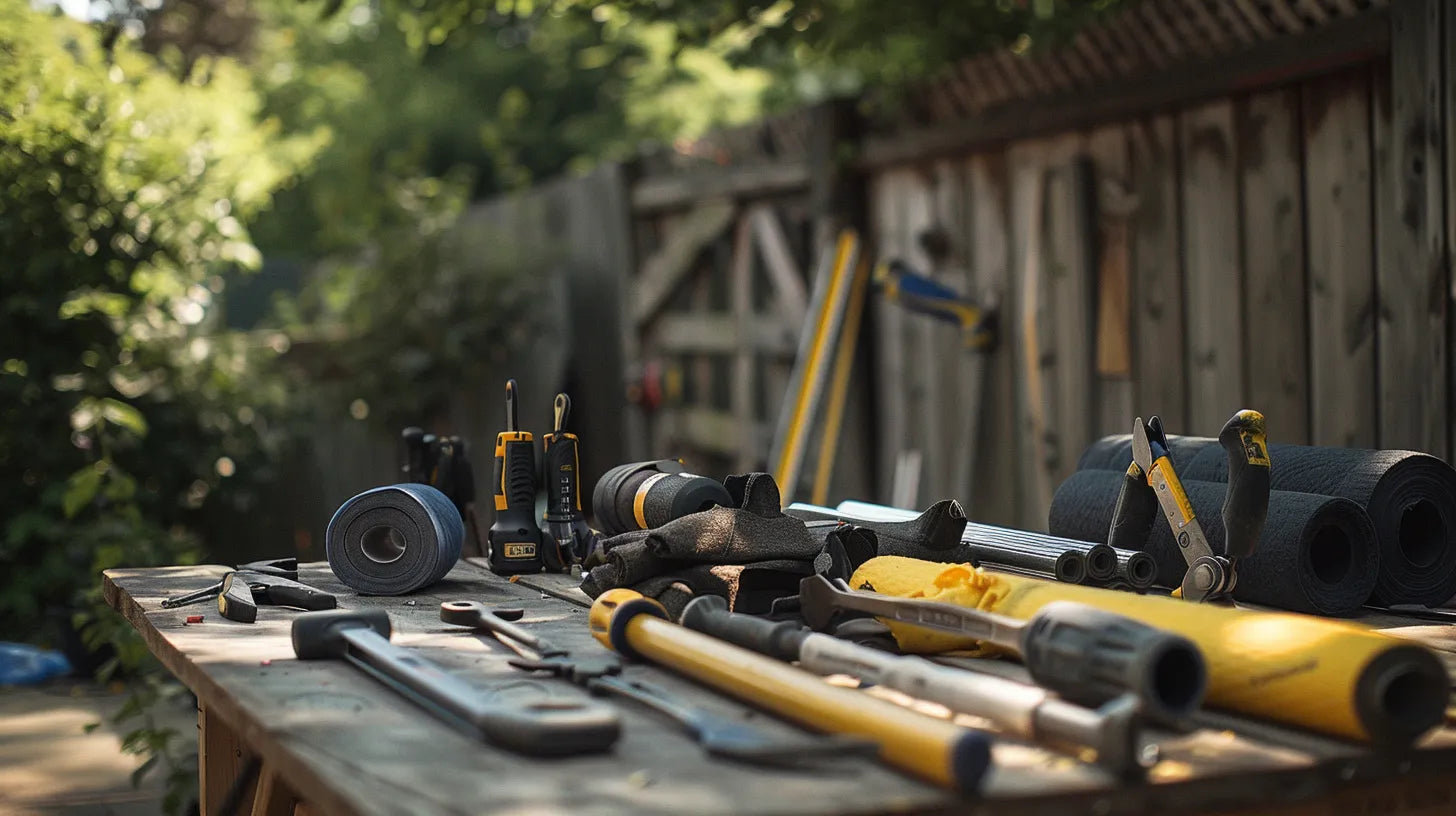As the cold season approaches, the task of insulating outdoor water spigots becomes crucial to prevent freezing and the subsequent risks of burst pipes and water damage. While the summary provides a comprehensive overview, it is imperative to consider the nuanced steps involved, such as the proper selection and installation of insulated faucet covers.
The adoption of frost-proof technology is also essential to safeguard your water supply and contribute to significant savings on potential repair costs. The intricacies of each step, including the selection of materials and the application of technology, warrant a closer examination for those interested in ensuring the longevity and efficiency of their outdoor plumbing infrastructure.
Necessary Tools and Materials
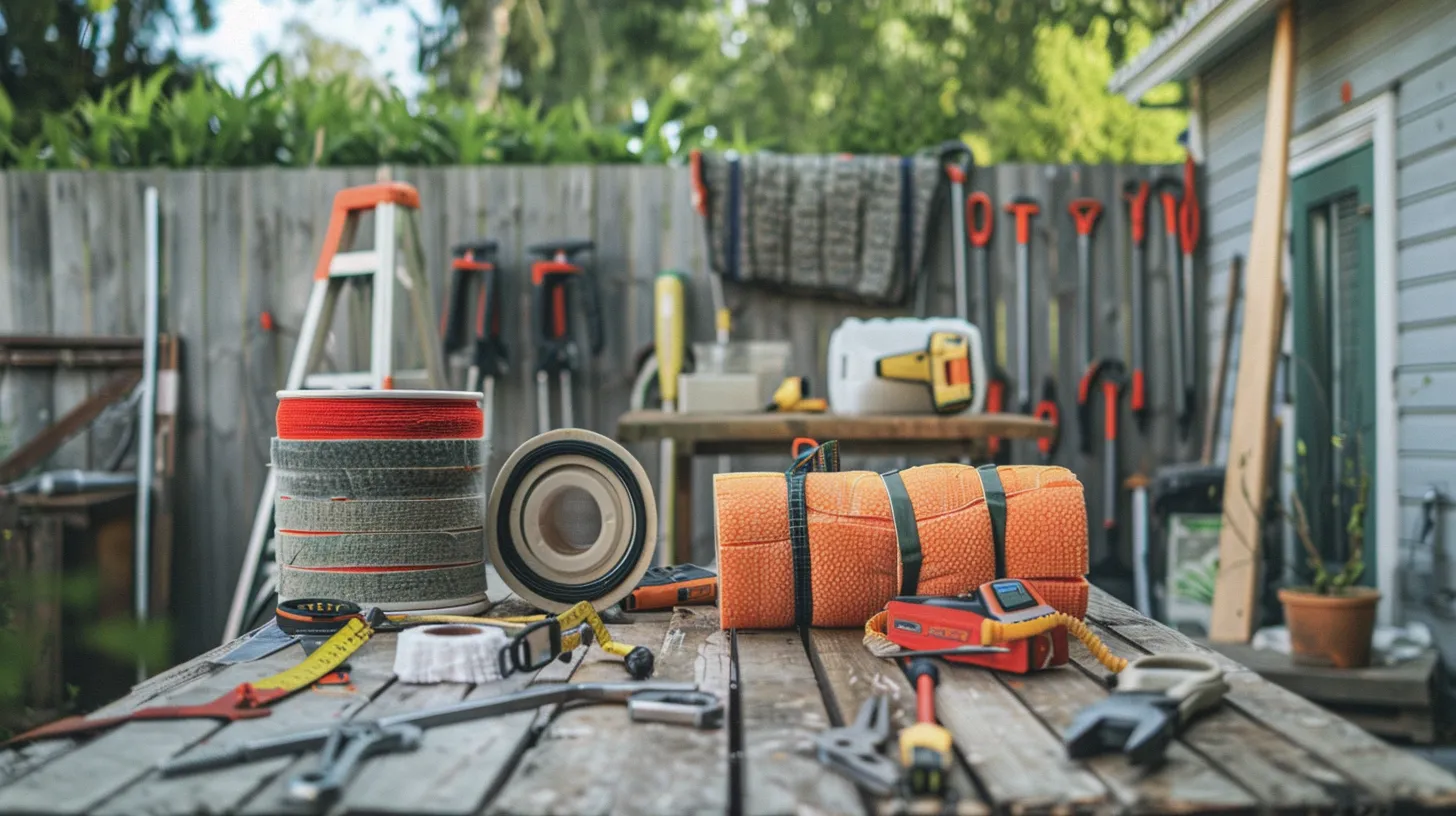
To effectively insulate outdoor water spigots and protect them from freezing temperatures, one will require a few essential tools and materials including insulated faucet covers, pipe insulation sleeves, duct tape, a screwdriver, and a towel. These items play a critical role in safeguarding outdoor faucets from the harsh realities of cold weather, thereby ensuring the integrity of the water supply system remains intact. Insulated faucet covers are specifically designed to trap heat around the spigot, preventing water contained within from freezing and potentially causing damage. Similarly, pipe insulation sleeves offer an extra layer of insulation around the pipes, minimizing heat loss and further protecting the water supply from the adverse effects of low temperatures.
Utilizing these tools and materials correctly is paramount in the fight against freezing temperatures. The combination of insulated faucet covers and pipe insulation sleeves serves as a formidable barrier against the cold, significantly reducing the risk of freeze-related damage. Duct tape can be utilized to secure the insulation in place, ensuring that it remains effective throughout the cold season. This strategic approach to insulation not only helps to protect outdoor faucets but also contributes to the overall preservation of the water supply system against the potential ravages of cold weather.
Disconnect and Inspect

Before initiating the insulation process, it's crucial to detach any hoses or attachments from the outdoor water spigot and conduct a thorough inspection for possible damage or leaks. This step is fundamental to ensuring the longevity and efficiency of your spigot's insulation against the cold. By disconnecting and carefully examining the spigot, homeowners can prevent water damage and the unnecessary hassle of repairs during the cold season.
Inspecting the outdoor water spigot involves a few key considerations: - Ensure the water supply is turned off to halt any flow that could interfere with the insulation process. - Look meticulously for signs of wear or damage, such as cracks or gaps around the spigot that cold air could penetrate, leading to freezing. - Cleaning the area around the spigot is essential, as it allows the insulation materials to adhere properly and form a tighter seal.
These steps not only safeguard your home from the risks associated with freezing temperatures but also evoke a sense of preparedness and peace of mind. Knowing that your outdoor water spigot is properly insulated and free of leaks or damage can provide significant relief during the colder months.
Drain Spigots and Pipes
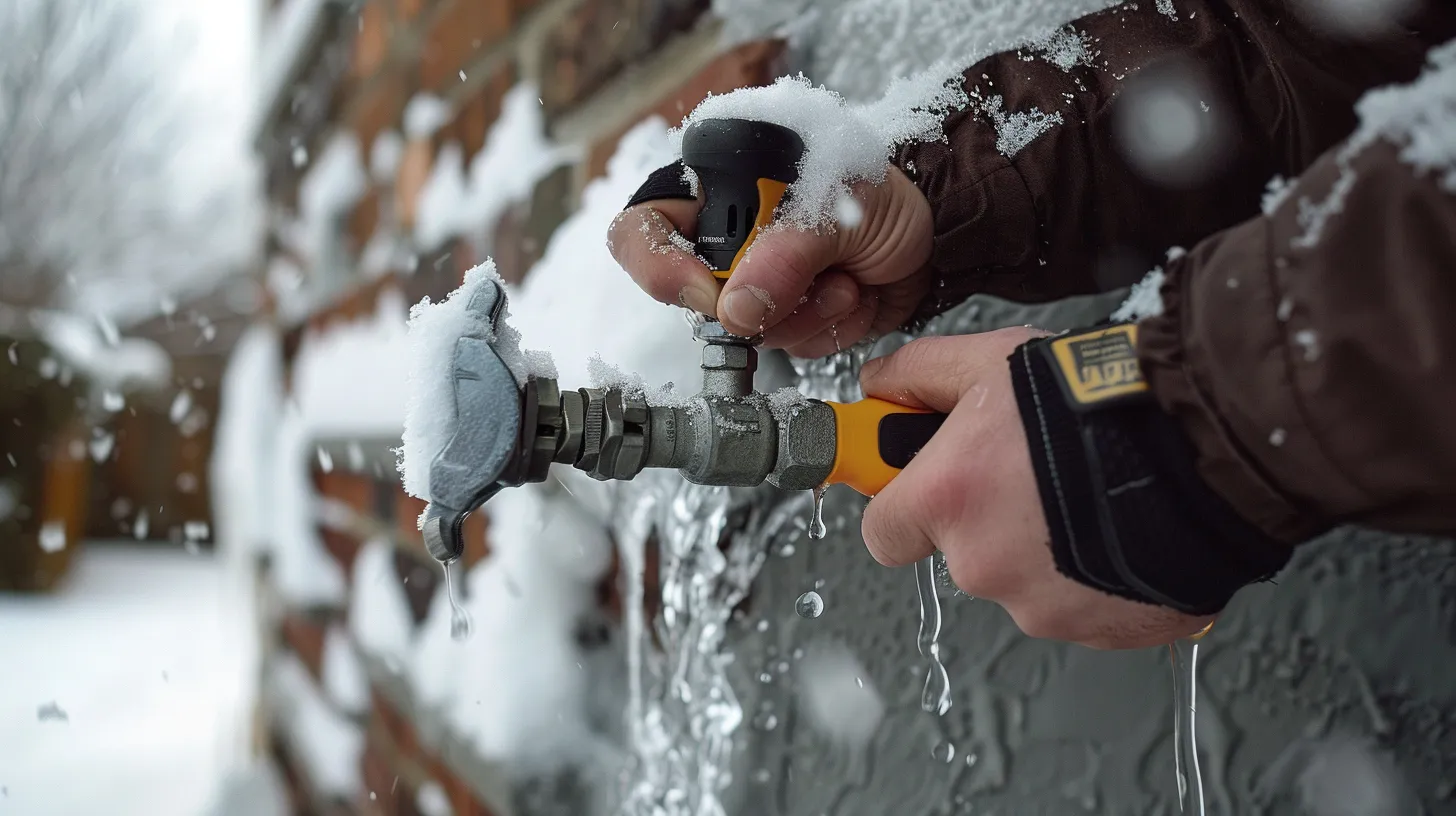
Draining outdoor spigots and pipes is a critical step in safeguarding your home's water systems against the harsh realities of freezing temperatures, ensuring the longevity and reliability of your outdoor water supply. By removing any excess water that might freeze, homeowners prevent the water from expanding within the pipes, which can lead to cracks, leaks, and even burst pipes. This process is pivotal in avoiding the detrimental effects that frozen pipes can have on your home's plumbing system.
To effectively drain the water, it's essential to locate the shut-off valve for your outdoor hose spigots and turn it off, cutting off the water supply. Once the supply is halted, open the spigots to allow any remaining water to drain out completely. This step ensures that there's no water left in the system that could potentially freeze during colder weather. Following this procedure not only minimizes the risk of damage from freezing temperatures but also sets a strong foundation for further protective measures, such as wrapping the faucet with an insulated cover, which will be addressed in subsequent care steps.
Properly drained spigots are significantly less likely to suffer from the adverse effects of freezing, thereby preventing costly repairs and maintaining the integrity of your outdoor water facilities.
Install Faucet Covers
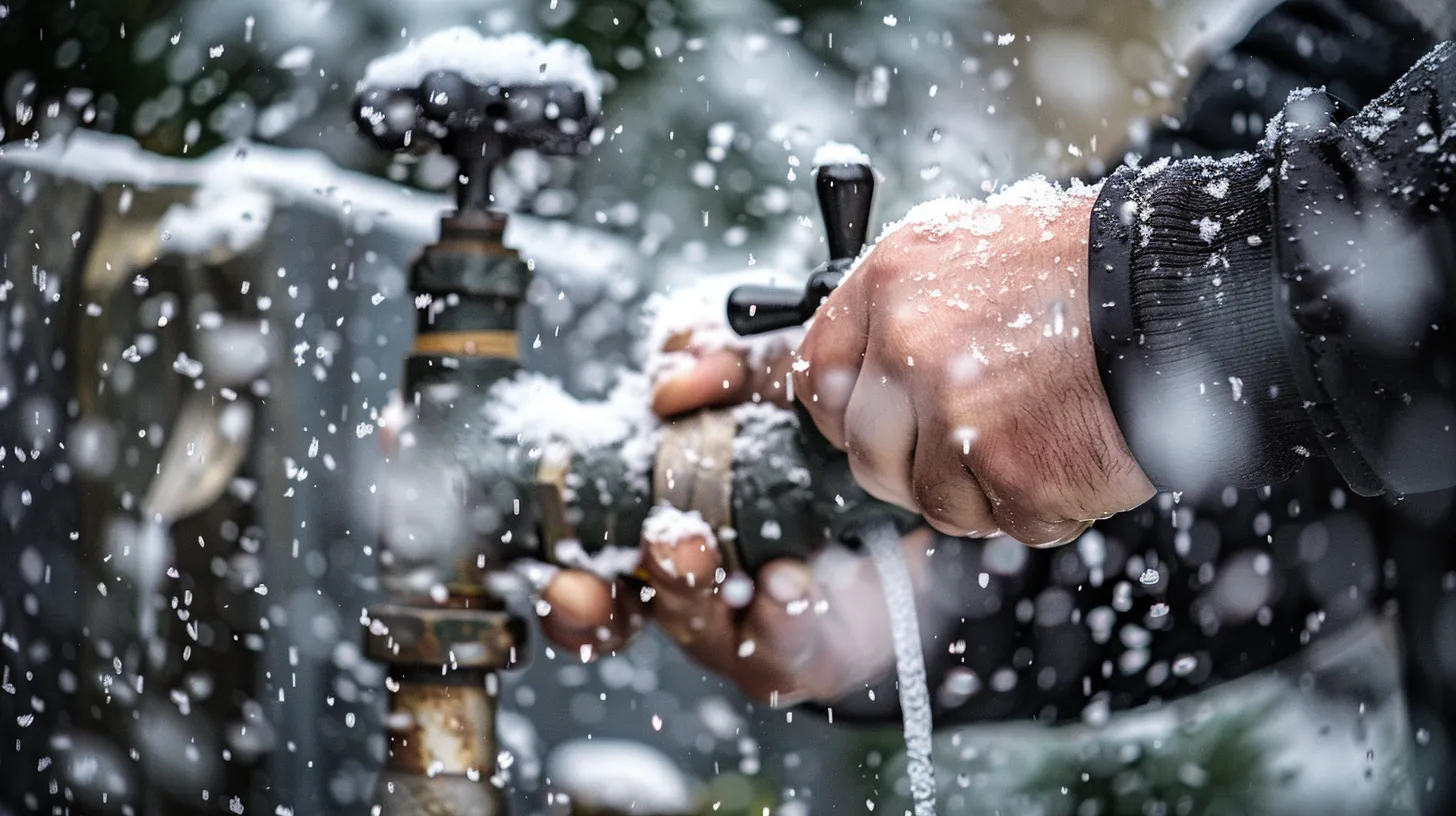
After ensuring outdoor spigots are properly drained, the next vital step in safeguarding your water fixtures against freezing temperatures is the installation of insulated faucet covers. These specialized covers offer a layer of protection, using foam insulation to maintain a warmer environment around the base of the faucet. This is crucial for preventing the interior pipes from freezing when it's cold enough outside.
Insulated faucet covers are designed to be easy to install and remove, making them a convenient and cost-effective solution for winterizing outdoor spigots. They come in various shapes and sizes to fit different types of spigots, ensuring a snug and effective fit.
- Protection: The foam insulation traps heat, significantly reducing the risk of your water line freezing.
- Convenience: Their ease of installation means you can quickly prepare for winter, and just as easily remove them when warmer temperatures return.
- Cost-Efficiency: Durable and reusable, these covers represent a minimal investment for maximum protection against costly repairs due to frozen and burst pipes.
Understanding Frost-Proof Technology
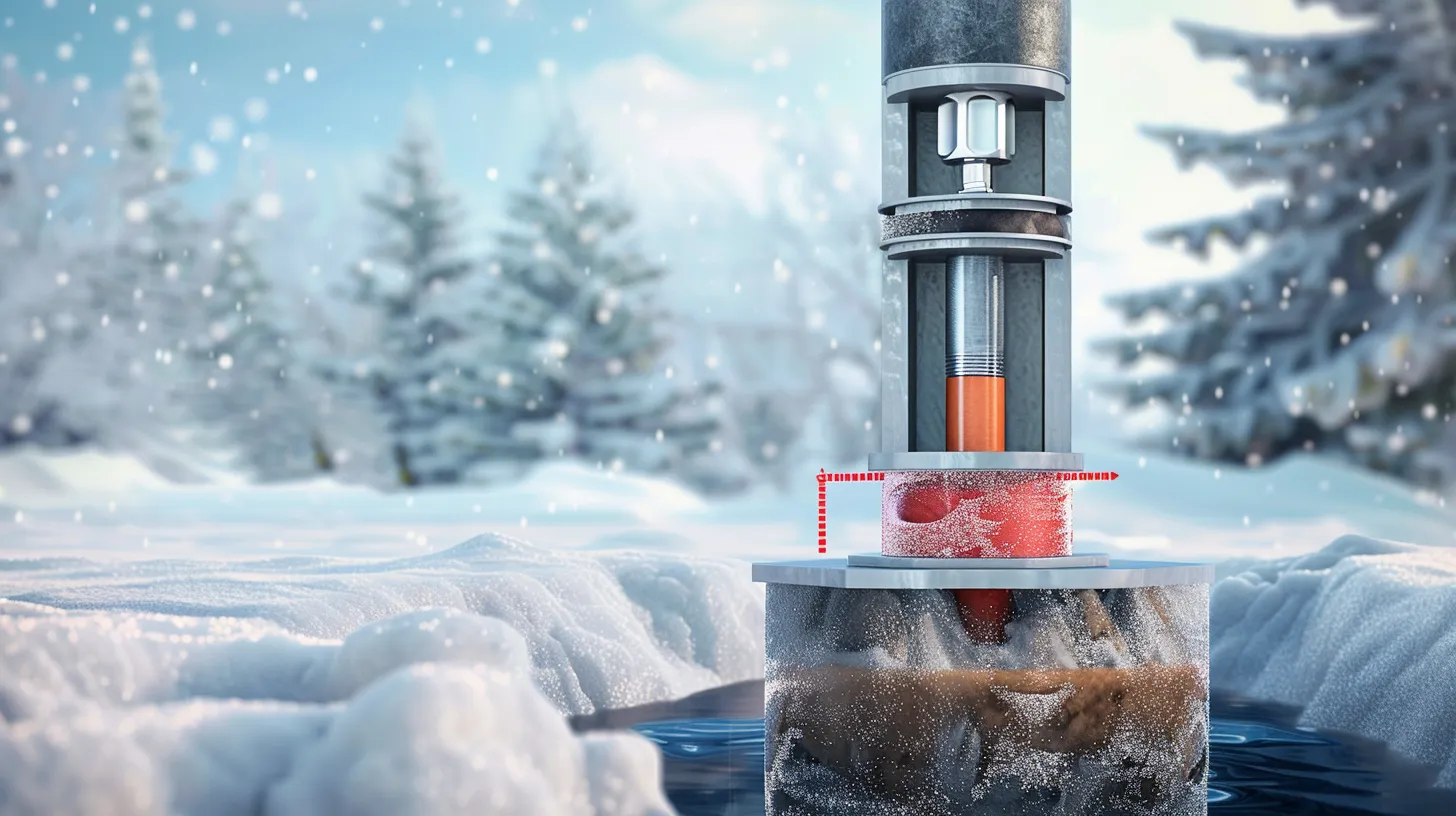
Frost-proof technology revolutionizes the way outdoor water spigots prevent freezing by shutting off the water supply within the foundation wall, where temperatures remain above freezing. This advanced approach ensures that water does not stay in the pipes where temperature drops could cause it to freeze, expand, and potentially burst the pipes. Frost-proof spigots feature mechanisms that are significantly longer than traditional washer seats, and their lengths vary to accommodate different wall widths. This design principle means that the critical point of water shut-off is safely tucked away inside the warmer interior spaces, leaving the exterior sections empty and therefore less susceptible to freezing.
Moreover, when preparing to insulate outdoor water spigots for winter, homeowners with frost-proof systems have one less worry. These specialized hose bibs are engineered to eliminate the need for external insulation covers. However, it is essential to disconnect garden hoses before the onset of cold weather. Leaving a hose attached can trap water inside the faucet, undermining the frost-proof technology and risking damage. Properly maintaining these frost-proof wall hydrants not only prevents frozen pipes but also extends the lifespan of outdoor spigots, ensuring reliable access to outdoor water year-round.


